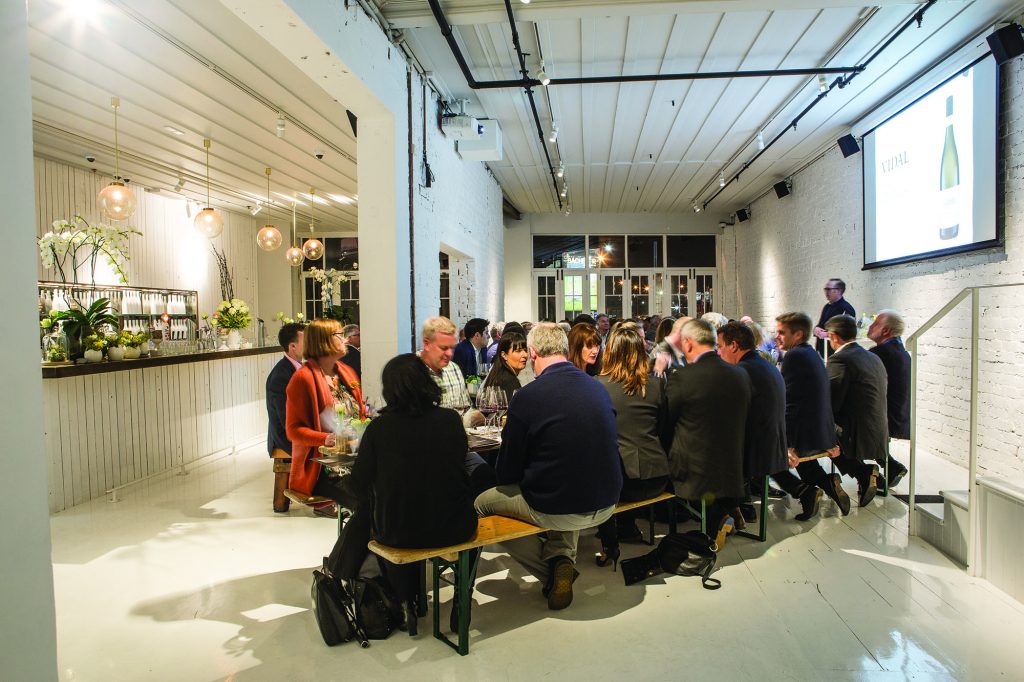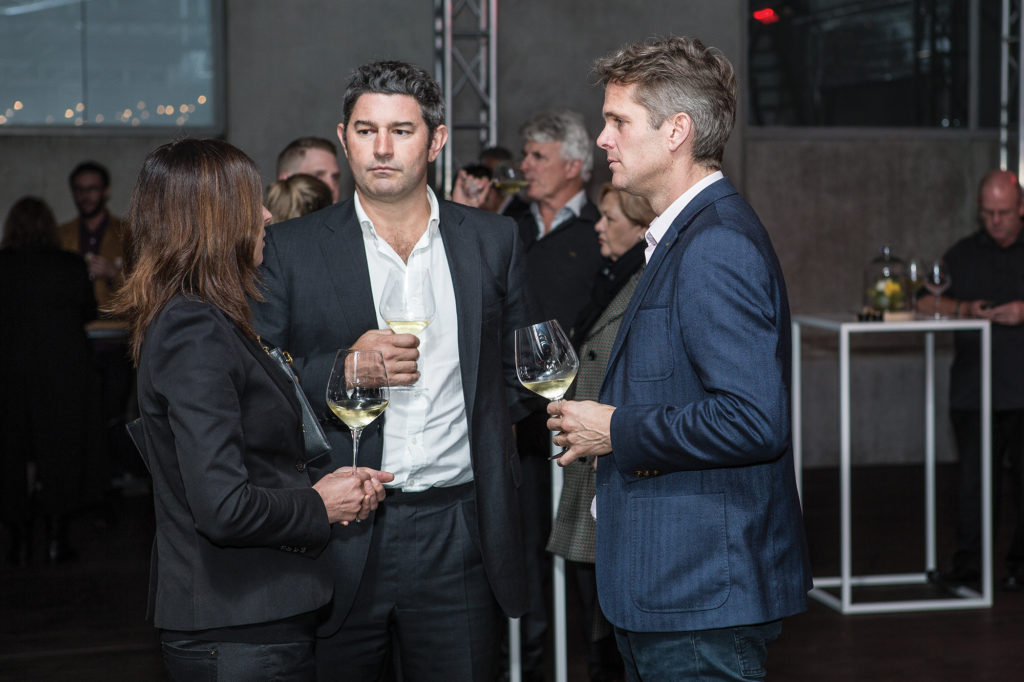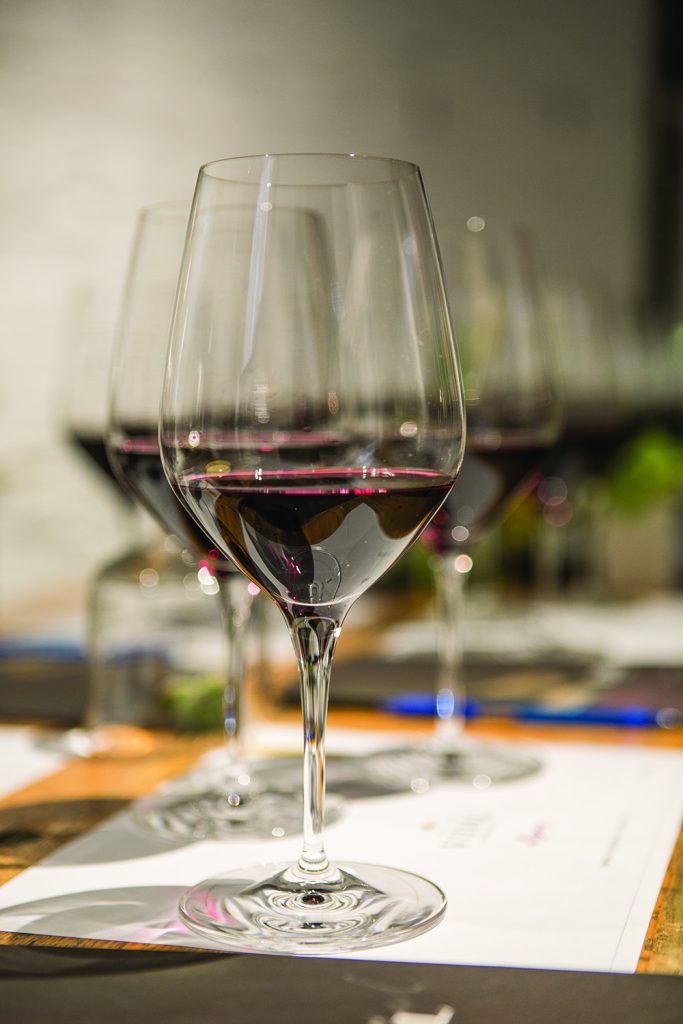This is How You Make a Legacy Using Nothing But Wine
THE RECENT RELEASES OF VIDAL LEGACY WINES HAVE ACHIEVED LOCAL AND GLOBAL ACCLAIM AND ALSO INFLUENCED THE PROCESS BEHIND VIDAL’S OTHER TIERS, SOLAR, RESERVE AND ESTATE. WE TALK TO VIDAL WINEMAKER, HUGH CRICHTON AT A RECENT TASTING IN AUCKLAND ABOUT HIS APPROACH, A FOCUS ON QUALITY AND BEING PART OF A LEGACY.
It is a really stupid question to ask someone, how would you describe a standard day?
It depends on the time of year, but during vintage it is quite different to now. So during vintage it is hands on the tools, if you like. A typical day in vintage would be time spent in the vineyards, walking and looking at the quality of the grapes, tasting the grapes when it is coming close to ripeness. Most days in the vineyard is tasting, and often earlyish in the morning. At that point we will make a picking decision. Then it is back to the winery and, I guess, overseeing and being involved in the production side, which is the receiving of the fruit and into barrel and the fermentation and then looking after the wine.
Outside of vintage we tend to do a bit more, I guess you would say, market work. You put the sales hat on and head off overseas or locally and tell stories about the wines, I guess, and taste them with current consumers and potential consumers. That does depend on the time of year, but the vintage is vintage.
It does depend a bit on the time of year, but there is no typical day, which is quite nice. Then there’s correspondence with wine buyers and owners of wine shops and some consumers and looking after people as well, when they come to Hawke’s Bay. Whether it be distributors, journalists, wine writers and really good customers – we look after them, show them around the vineyards and take them to the winery. So there is that real consumer customer interface. The winemaking person has to have strengths in all those areas.
You are talking about a really diverse range of skills. Is there one aspect of the job that you really, really love that you really feel that you are in your flow with?
I love the wine making side. Obviously that is what we are employed for and that is our strength. Vintage is fantastic, it is full on. Before vintage, in some respects, you are slightly dreading it because you know it is going to be 7 days a week and a lot of hours, but then when it is going I think the adrenalin kicks in and you are away and you love it. Then by the end of vintage, you are kind of over it after a long period of time.
The winemaking is what I love the most. Outside of that, I kind of enjoy the marketing and brand work. So Vidal, in particular, has had a bit of a change in its brand perception and presentation in the last ten years. I guess I have been key to driving that change. It is not only the attention to detail and the winery and the vineyard with a view to quality, but that should also carry through in all your marketing materials. Your labelling and your packaging and all those consumer touch points where people can look at that product and without even tasting it, they should think that should be a good quality wine just by the way it looks. You can have a great product, a great wine, but have terrible presentation and branding. Before you even taste it, you are looking at that and your perception is low quality. I find that whole marketing and branding side really fascinating.

In terms of marketing, could you break down some of the details in terms of that evolution of some of the key points that you have looked at.
With Vidal, we have got a lot of depth of heritage in our brand, we were set up in 1905. So there is a classic nature to our brand. That doesn’t mean we are not innovative and it doesn’t mean we are not looking forward at new things, but our roots do go deep. Some of our previous branding had gone down the more contemporary root. It didn’t really speak to who we were or where we came from. While I wasn’t a fan of the labels myself, some people did like them. But you have to keep changing, for us more that classical route, but with a little bit of flare, a bit of creativity and a solid backbone of heritage.
Does it work the other way as well a little bit? If you clarify what the brand is about and what it stands for, does that start to reinforce the wine making approach as well?
Absolutely. A good example is our wine making approach. We focus on Chardonnay, Syrah and the Cabernet Sauvignon Merlot blends. Our Chardonnay approach and the way we make the wine is very much born from how they did it a long, long time ago. We handpick the fruit, we press it out gently, put the juice to French oak barrels and then we just leave it and then it starts fermenting naturally. Then the wine in essence makes itself. Then we just go around and manually stir each barrel once a week. I love the style of wine that comes from that. You can still control certain parts of it; how much you stir and how much is natural fermentation and how much is not, but I like the simplicity of that approach and it does tie you back to the heritage. Of course, things have moved on and we know a lot more about wine making than we used to, but we would rather not add anything to the wine if we can. Just keep it about the provenance, the quality and the fruit, and that is what makes the wine.
As you say, things have moved on in a lot of ways, so people aren’t needing to hand-pick fruit anymore. Is there a compromise in terms of economies of scale in business and profit?
Yeah. We have got different quality levels and obviously different price steers. For us, Legacy is the ultimate. That is the best we can do from a given vintage. And actually, if it is not at a certain standard we won’t release it. We don’t have really any restrictions on that from a growing and a making point of view. It is quality no matter what. It doesn’t matter about yield, doesn’t matter about how expensive French oak is, whatever is best to make the best wine. That involves hand-picking and really good quality French oak and releasing the wine when it is ready and not when the market wants it and all those factors that do influence the taste in the end product.
When you go further down, obviously the price points drop a bit and you need a bit more commercial reality to meet certain price points and you have to do certain things differently. But you can still focus on the quality of those as well. That is one of the benefits of our approach in the way that we classify our vineyards. We classify Legacy, Solar, Reserve and Estate and we operate differently in those parcels. So Legacy over time has proved itself to make the greatest wines, which is why it is classified as Legacy. Solar is then kind of the next tier down. You can apply Legacy thinking to Solar without necessary incurring a lot more costs, because you learn new things as you go along. We do a lot of that. Even down to our Reserve, we can apply Legacy thinking, but it just won’t have the concentration or the power that Legacy has got because the yields might be a bit higher in the vineyard to meet those lower price points.

Can you describe some of that Legacy thinking? Some of the things you might have transferred?
With Legacy we have a Syrah, Cab Sav, Merlot and the Chardonnay. The sort of things that we have transferred across from Chardonnay, for example, down to Solar is natural fermentation. You can either inoculate a wine for fermentation or you can let it happen naturally. So to inoculate it is just like making bread, you add a yeast – a natural yeast, but a commercially produced yeast. You add that to the wine and that guarantees a pretty secure fermentation. With natural fermentation, it is a bit risker because there aren’t numbers to guarantee the finishing of that fermentation, so you need to monitor it more carefully and closely. But there are certain things you can do to ensure that it is going to go through and we have learnt those things through the Legacy. Solar is naturally fermented and we are applying natural fermentation to our Reserve levels as well. So that is a good example where there are no increased costs but it effects quality and effects wine style.
What else would there be? Hand-picking is quite different because hand-picking is a lot more expensive. But the quality of some of the equipment these days in the vineyard, and the winery in particular, have really raised the quality of juice. It is now very gentle. You don’t pickup as much bitterness as you used to with the old machinery. That has allowed higher quality mines, but that is not probably not borrowing from Legacy thinking, that is just more advancement in equipment.
Early in your career you did vintages in Europe where you have got generations and generations potentially of family involvement. Is legacy a big thing for you? Do you think about your stamp on a moment in time?
Not just my stamp personally, but the viticulture team. I think we have changed direction in Chardonnay in particular, from what the previous wine making team was doing. We are regarded as, without sounding too boastful, as one of the top handful of chardonnay producers in the country and we are getting some really good recognition overseas for Legacy. I don’t think about leaving anything behind, but I enjoy getting somewhere like that. We only introduced Legacy for the Chardonnay in 2010, so it is relatively recent, so we have come a really long way in a short period of time. I have got to say, it is enjoyable to get the recognition from peers and some critics and writing up good things about it. That is nice. I think it puts the brand in quite a good position too, it creates a bit of a halo effect on your other tiers as well.
What I find amazing is George Fistonich’s legacy. Starting with essentially nothing and creating what it is now a very large family-owned wine company. His ethos is still so focussed on quality. That comes through with all his wines whether Villa Maria, Esk Valley, Vidal Estate or Te Awa. I think for us, as winemakers and grape growers, we are lucky to have him because essentially he is a winemaker. He was a winemaker and he was a grape grower, so he really understands what it takes to make quality. We get quite a bit of leeway in what we want to do, which is really important, because to make quality wine, it is bloody expensive. But he really believes in the benefits of that for the brand in the future and for the long term for the next generation. For George, it is a big part of his being, his legacy and leaving for the next generation something pretty amazing that he has built up.

It must be quite a motivating thing to be around?
Yeah. It has got a really good culture. Really quality focused culture. It is not too hierarchal. George pretty much knows everyone in the company and is happy for anyone to call him. He gets out and he is out with the sales team and he readily sees us, the winemaking team. He just doesn’t rest. He is in his late 70s and still going strong and wants to be involved in everything.
Even though he gives you that autonomy, could you quantify anything that you have learnt from him or anything you have picked up or been influenced by?
Yeah, I have learnt a few things from George. One being if someone says no and you know it is right, you don’t accept no. So perseverance. I have done that a lot with George, I’ve persevered. Legacy didn’t exist before I came on board, and Solar didn’t and the change in the branding, I was one of a team that was quite instrumental with that and I persevered with that.
Can you describe the importance of having a new winery closer to the vineyard?
Yeah, so we built a new winery. The old winery was in the middle of Hastings, where it was established in 1905. It was a great site and served purposes for a long time, but suburbia grew around us and we started to be restricted on when we could pick because we were making too much noise for the neighbours. It started to have implications on quality. So removing ourselves from there into a vineyard has meant that we can pick when we want to pick and make that decision purely based on quality. That is a massive benefit.
Also, with building a state-of-the-art winery with incredible equipment and really gentle processing equipment is a big plus as well. Having really gentle crushing and really gentle presses can have quite a big impact on quality. Quality has gone up since we moved out to the new winery. We are closer to the vineyards and it kind of feels nice. You are a wine maker and you are growing grapes, so it is quite nice to be situated there. The travel time from the vineyard to the winery is a lot less, because we are right there, and that has positive impacts on quality as well. It is exciting times. Another step in that premium story for us.


